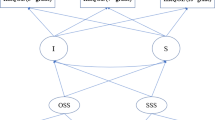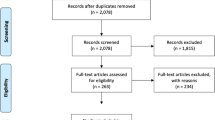Abstract
Purpose
To examine (1) racial/ethnic disparities in health-related quality of life (HRQOL) and overall health status among Black, Latino, and White youth during adolescence; (2) whether socioeconomic status (SES) and family contextual variables influence disparities; and (3) whether disparities are consistent from pre- to early- to mid-adolescence.
Methods
A population sample of 4823 Black (1755), Latino (1812), and White (1256) youth in three US metropolitan areas was prospectively assessed in a longitudinal survey conducted on three occasions, in 5th, 7th, and 10th grades, when youth reported their HRQOL using the PedsQL™ short-form Total, Physical and Psychosocial scales and youth and parents separately reported on youth’s overall health status. Parents reported their education and household income to index SES, family structure, and use of English at home.
Results
Based on analysis conducted separately at each grade, marked racial/ethnic disparities were observed across all measures of HRQOL and health status, favoring White and disfavoring Black, and especially Latino youth. More strongly present in 5th and 7th grade, HRQOL disparities decreased by 10th grade. Most disparities between White and Black youth disappeared when adjusting for SES. However, even after adjusting for SES, family structure, and English use, overall health status disparities disfavoring Latino youth remained across all three assessments.
Conclusions
Racial/ethnic disparities in adolescent HRQOL and health are substantial. These disparities appear consistent from pre- to early-adolescence but diminish for HRQOL by mid-adolescence. As disparities appear influenced by SES and other family contextual variables differently in different racial/ethnic groups, efforts to reduce health disparities in youth should address culturally specific conditions impinging on health.

Similar content being viewed by others
Abbreviations
- HRQOL:
-
Health-related quality of life
- OHS:
-
Overall health status
- PedsQL™:
-
Pediatric Quality of Life Inventory
- SES:
-
Socioeconomic status
- GLM:
-
General linear model
References
Centers for Disease Control and Prevention, Division on Adolescent and School Health. (2018). Health disparities [Web page]. Retrieved October 25, 2018, from https://www.cdc.gov/healthyyouth/disparities/index.htm#1.
Flores, G. American Academy of Pediatrics Committee on Pediatric Research (2010). Technical report-Racial and ethnic disparities in the health and health care of children. Pediatrics 125(4), e979-e1020.
Schuster, M. A., Elliott, M. N., Kanouse, D. E., Wallander, J. L., Tortolero, S. R., Ratner, J. A., et al. (2012). Racial and ethnic health disparities among fifth-graders in three cities. New England Journal of Medicine, 367(8), 735–745.
Wallander, J. L., Fradkin, C., Chien, A. T., Mrug, S., Banspach, S. W., Davies, S., et al. (2012). Racial/ethnic disparities in health-related quality of life and health in children are largely mediated by family contextual differences. Academic Pediatrics, 12(6), 532–538.
Bloom, B., Jones, L. I., & Freeman, G. (2013). Summary health statistics for US children: National Health Interview Survey, 2012. National Center for Health Statistics. Vital Health Statistics. 10(258).
World Health Organization. (1948). Constitution of the World Health Organization. New York: World Health Organization. Retrieved February 27, 2018, from http://apps.who.int/gb/bd/PDF/bd47/EN/constitution-en.pdf.
Healthy people 2020. Health-related quality of life and well-being [Web page]. Retrieved October 25, 2018, from https://www.healthypeople.gov/2020/about/foundation-health-measures/Health-Related-Quality-of-Life-and-Well-Being.
Wallander, J. L. (2001). Theoretical and developmental issues in quality of life for children and adolescents. In H. M. Koot & J. L. Wallander (Eds.), Quality of life in children and adolescents (pp. 23–48). London: Brunner/Routledge.
Varni, J. W., Burwinkle, T. M., Seid, M., & Skarr, D. (2003). The PedsQL 4.0 as a pediatric population health measure: Feasibility, reliability, and validity. Ambulatory Pediatrics, 3, 329–341.
Varni, J. W., Burwinkle, T. M., & Seid, M. (2006). The PedsQL TM 4.0 as a school population health measure: Feasibility, reliability, and validity. Quality of Life Research, 15(2), 203–215.
Flores, G., & Tomany-Korman, S. C. (2008). Racial and ethnic disparities in medical and dental health, access to care, and use of services in US children. Pediatrics, 121(3), e286–e298.
Flores, G., Bauchner, H., Feinstein, A. R., & Nguyen, U. D. T. (1999). The impact of ethnicity, family income, and parental education on children’s health and use of health services. American Journal of Public Health, 89, 1066–1071.
Lieu, T. A., Newacheck, P., & McManus, M. A. (1993). Race, ethnicity, and access to ambulatory care among US adolescents. American Journal of Public Health, 83, 960–965.
Shone, L. P., Dick, A. W., Brach, C., Kimminau, K. S., LaClair, B. J., Shenkman, E. A., et al. (2003). The role of race and ethnicity in the State Children’s Health Insurance Program (SCHIP) in four states: Are there baseline disparities and what they mean for SCHIP? Pediatrics, 112(suppl. E1), e521-e532.
Stevens, G. D. (2006). Gradients in the health status and developmental risks of young children: The combined influences of multiple social risk factors. Maternal and Child Health Journal, 10, 187–199.
Chen, E., Matthews, K. A., & Boyce, W. T. (2003). Socioeconomic differences in children’s health: How and why do these relationships change with age? Psychological Bulletin, 128, 295–329.
Williams, D. R., & Mohammed, S. A. (2009). Discrimination and racial disparities in health: Evidence and needed research. Journal of Behavioral Medicine, 9, 39:20–47.
Chen, E., Martin, A. D., & Matthews, K. A. (2006). Understanding health disparities: The role of race and socioeconomic status in children’s health. American Journal of Public Health, 96, 702–708.
Windle, M., Grunbaum, J. A., Elliott, M., Tortolero, S. R., Berry, S., Gilliland, J., et al. (2004). Healthy Passages: A multilevel multimethod longitudinal study of adolescent health. American Journal of Preventive Medicine, 27(2), 164–172.
Varni, J. W., Seid, M., & Kurtin, P. S. (2001). The PedsQL™ 4.0: Reliability and validity of the Pediatric Quality of Life Inventory™ Version 4.0 Generic Core Scales in healthy and patient populations. Medical Care, 39, 800–802.
Chan, K. S., Mangione-Smith, R., Burwinkle, T. M., Rosen, M., & Varni, J. W. (2005). The PedsQL™: Reliability and validity of the short-form generic core scales and asthma module. Medical Care, 43(3), 256–265.
Limbers, C. A., Newman, D. A., & Varni, J. W. (2009). Factorial invariance of child self-report across race/ethnicity groups: A multigroup confirmatory factor analysis approach utilizing the PedsQL™ 4.0 Generic Core Scales. Annals of Epidemiology, 19, 575–581.
Bauman, L. J., Silver, E. J., & Stein, R. E. (2006). Cumulative social disadvantage and child health. Pediatrics, 117, 1321–1328.
Bramlett, M. D., & Blumberg, S. J. (2007). Family structure and children’s physical and mental health. Health Affairs, 26, 549–558.
Kohen, D. E., Brehaut, J. C., Garner, R. E., Miller, A. R., Lach, L. M., Klassen, A. F., & Rosenbaum, P. L. (2007). Conceptualizing childhood health problems using survey data: a comparison of key indicators. BMC Pediatrics, 7(1), 40.
Kauffman, J. S., Cooper, R. S., & McGee, D. L. (1997). Socioeconomic status and health in blacks and whites: The problem of residual confounding and the resiliency of race. Epidemiology, 8, 621–628.
Williams, D. R. (1999). Race, socioeconomic status, and health: The added effects of racism and discrimination. Annals of the New York Academy of Science, 896, 173–188.
Markham, C. M., Fleschler Peskin, M., Addy, R. C., Baumler, E. R., & Tortolero, S. R. (2009). Patterns of vaginal, oral, and anal sexual intercourse in an urban seventh-grade population. Journal of School Health, 79, 193–200.
Peña, J., Wyman, P., Brown, C., Matthieu, M., Olivares, T., Hartel, D., & Zayas, L. H. (2008). Immigration generation status and its association with suicide attempts, substance use, and depressive symptoms among Latino adolescents in the USA. Prevention Sciences, 9, 299–310.
Jiang, Y., Perry, D. K., & Hesser, J. E. (2010). Adolescent suicide and health risk behaviors: Rhode Island’s 2007 youth risk behavior survey. American Journal of Preventive Medicine, 38, 551–555.
Springer, A., Lewis, K., Kelder, S., Fernandez, M., Barroso, C., & Hoelscher, D. (2010). Physical activity participation by parental language use in 4th, 8th, and 11th grade students in Texas. USA. Journal of Immigrant and Minority Health, 12, 69–78.
Koepke, S., & Denissen, J. J. (2012). Dynamics of identity development and separation–individuation in parent–child relationships during adolescence and emerging adulthood—a conceptual integration. Developmental Review, 32, 67–88.
Wallander, J. L., & Koot, H. M. (2016). Quality of life in children: A critical examination of concepts, approaches, issues, and future directions. Clinical Psychology Review, 45, 131–142.
Koot, H. M., & Wallander, J. L. (Eds.). (2001). Quality of life in children and adolescents. London: Brunner/Routledge.
Szilagyi, P. G., & Schor, E. L. (1998). The health of children. Health Services Research, 33(pt 2), 1001–1039.
Healthy People.gov (2015). Healthy People 2020. Framework: The Vision, mission, and goals of Healthy People 2020. Retrieved February 27, 2018, from https://www.healthypeople.gov/sites/default/files/HP2020Framework.pdf.
Seid, M., Varni, J. W., Cummings, L., & Schonlau, M. (2006). The impact of realized access to care on health-related quality of life: A two-year prospective cohort study of children in the California State Children’s Health Insurance Program. Journal of Pediatrics, 149, 354–361.
Sherman, A. (1997). Poverty matters: The cost of child poverty in America. Washington DC: Children’s Defense Fund.
Acknowledgements
The Healthy Passages™ study was funded by the Centers for Disease Control and Prevention (Cooperative Agreements CCU409679, CCU609653, CCU915773, U48DP000046, U48DP000057, U48DP000056, U19DP002663, U19DP002664, and U19DP002665). The findings and conclusions in this report are those of the authors and do not necessarily represent the official position of the CDC. Dr. Fradkin was funded by a 2017–2018 Fulbright Scholar award. The contributions made to this research by study participants in the Birmingham, Houston, and Los Angeles areas, other Healthy Passages™ investigators, field teams at each site, and the CDC Division of Adolescent and School Health are gratefully acknowledged.
Author information
Authors and Affiliations
Corresponding author
Ethics declarations
Conflict of interest
The authors have no conflict of interest to disclose.
Additional information
Publisher’s Note
Springer Nature remains neutral with regard to jurisdictional claims in published maps and institutional affiliations.
Rights and permissions
About this article
Cite this article
Wallander, J.L., Fradkin, C., Elliott, M.N. et al. Racial/ethnic disparities in health-related quality of life and health status across pre-, early-, and mid-adolescence: a prospective cohort study. Qual Life Res 28, 1761–1771 (2019). https://doi.org/10.1007/s11136-019-02157-1
Accepted:
Published:
Issue Date:
DOI: https://doi.org/10.1007/s11136-019-02157-1




